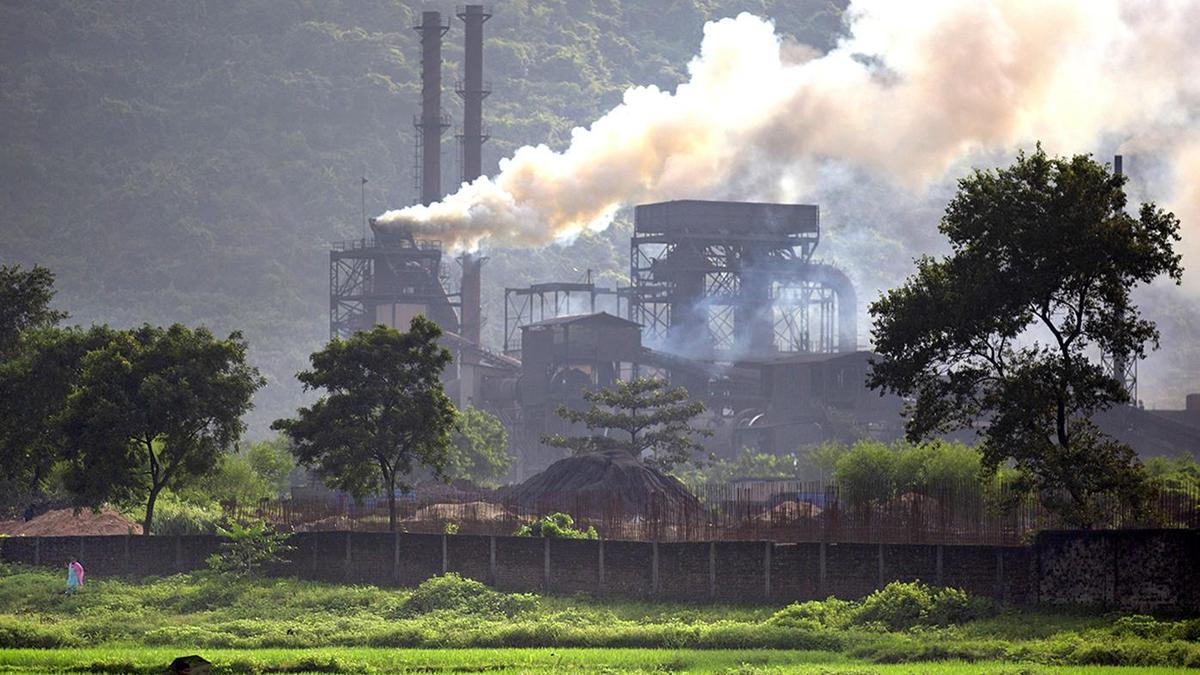Fossil fuel-driven air pollution claimed 1.72 million lives in India in 2022: The Lancet report

IN NEWS:
Fossil fuel-driven air pollution claimed 1.72 million lives in India in 2022: The Lancet Report
ANALYSIS:
- According to The Lancet Countdown 2025 Report on Health and Climate Change, fossil fuel-driven air pollution caused 1.72 million deaths in India in 2022.
- Coal and petrol alone were responsible for over half a million deaths, highlighting the severe human cost of delayed climate action.
- The economic loss due to premature mortality from outdoor air pollution amounted to $339.4 billion, approximately 9.5% of India’s GDP.
- Household air pollution, primarily from solid biofuels, led to 113 deaths per 100,000 population, with rural areas more affected (125 per 100,000) than urban (99 per 100,000).
- In 2024, the average Indian faced 19.8 heatwave days, with 6.6 days directly linked to climate change.
- The nation witnessed a record 366 hours of heat exposure, resulting in the loss of 247 billion labour hours and an estimated $194 billion in economic damage.
- India’s preparedness for a low-carbon transition declined by 2% in 2024, reflecting a concerning fall in climate resilience.
Disease and Displacement:
- The average transmission potential (R₀) for dengue via Aedes albopictus rose from 0.86 (1951–60) to 1.60 (2015–2024) — surpassing the epidemic threshold.
- The coastal area suitable for Vibrio transmission increased 46% from the 1982–2010 baseline.
- 18 million Indians live less than one metre above sea level, heightening vulnerability to sea-level rise.
- 35% of India’s land experienced at least one month of extreme drought annually (2020–2024) — a 138% increase since the 1950s.
- Wildfire smoke (PM2.5) caused an annual average of 10,200 deaths (2020–2024), up 28% from the previous decade.
Fossil Fuel Dependence:
- India spent $48.5 billion on net fossil fuel subsidies in 2023, while carbon revenue remained negative.
- Coal contributes 46% of total energy and 72% of electricity generation, while renewables account for just 2% of total energy and 10% of electricity supply.
- 96% of road transport energy is fossil-fuel-based; electricity contributes only 0.3%.
- 58% of household energy comes from solid biofuels, worsening indoor air pollution.
Environmental Degradation:
- India lost 2.33 million hectares of tree cover (2001–2023), including 143,000 hectares in 2023.
- Urban greenness declined in 110 of 189 major cities; only Tamluk (West Bengal) ranked “high.”
- Between 2015–2024, average urban greenness fell by 3.6%.
- Agricultural emissions increased 13% (2000–2022), with red meat and dairy responsible for 65% of farm-sector emissions.
Media and Public Awareness:
- In 2024, Indian newspapers published 296 articles on climate and health, up 19% from 2023.
- These made up 15.3% of total climate coverage, showing rising awareness.
- However, 75% of research focused on health impacts, and just 0.4% addressed indigenous communities.
Global Context:
- The report covered 100+ countries, revealing shared global vulnerabilities — rising heat deaths, wildfire exposure, and vector-borne disease outbreaks — notably in Brazil, Mexico, Argentina, Colombia, and Chile.
- Encouragingly, between 2010–2022, around 160,000 premature deaths were prevented annually worldwide due to reduced fossil fuel use.
STATIC PART / BACKGROUND:
- The Lancet Countdown:
An annual peer-reviewed global collaboration monitoring the link between climate change and health. It tracks the effects of climate change on health outcomes, systems, and economic conditions. - India’s Climate Challenge:
High dependence on coal and biofuels, low renewable penetration, and vulnerability to extreme weather events amplify health and economic risks. - Key Concern:
Delay in low-carbon transition risks both public health and economic stability.
Updated – 30 Oct 2025 ; 11:34 AM | News Source: The Hindu